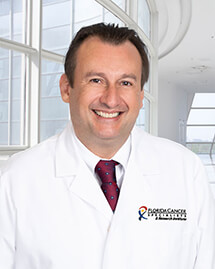Primary Retroperitoneal Lymph Node Dissection for Patients With Pathologic Stage II Nonseminomatous Germ Cell Tumor—N1, N2, and N3 Disease: Is Adjuvant Chemotherapy Necessary?
Author(s): Isamu Tachibana , MD1; Sean Q. Kern, MD1; Antoin Douglawi , MD1; Yan Tong, MS2; Mohammad Mahmoud, MD1; Timothy A. Masterson, MD1; Nabil Adra , MD3; Richard S. Foster, MD1; Lawrence H. Einhorn, MD3; and Clint Cary , MD, MPH1
PURPOSE
According to National Comprehensive Cancer Network guidelines, adjuvant chemotherapy (AC) has been advocated after primary retroperitoneal lymph node dissection (RPLND) to reduce the risk of relapse in pathologic nodal (pN) stage pN2 or pN3, whereas surveillance is preferred for pN1. We sought to explore the oncologic efficacy of primary RPLND alone for pathologic stage II in nonseminomatous germ cell tumors (NSGCTs) to reduce overtreatment with chemotherapy.
METHODS
Patients with pathologic stage II NSGCT after primary RPLND between 2007 and 2017 were identified. Patients were excluded for elevated preoperative serum tumor markers, receipt of AC, or if pure teratoma or primitive neuroectodermal tumor elements were found in the retroperitoneal pathology.
RESULTS
We identified 117 patients with active NSGCT in the retroperitoneum after primary RPLND. We excluded seven patients who lacked meaningful follow-up and 13 patients who received AC. There were 97 patients treated with RPLND alone: 41 pN1, 46 pN2, and 10 pN3. In total, 77 of 97 patients had not recurred after a median follow-up time of 52 months. The 2-year recurrence-free survival (RFS) was 80.3%, and the 5-year RFS was 79%. No differences in RFS were noted among nodal stage—pN1, pN2, and pN3—on Kaplan-Meier analysis. Lymphovascular invasion in the orchiectomy specimen, a high-risk pathologic feature, was also predictive of recurrence after primary RPLND. All 20 patients who recurred were treated with first-line chemotherapy and remained continuously disease free.
CONCLUSION
Most men with pathologic stage II disease treated with surgery alone in our series never experienced a recurrence. We did not observe a difference in recurrences between patients with pN1 and pN2. The recommendation for AC for pN2 disease may be overtreatment in most patients.
Author Affiliations
1Department of Urology, Indiana University School of Medicine, Indianapolis, IN 2Department of Statistics, Indiana University, Indianapolis, IN 3Department of Hematology/Oncology, Indiana University School of Medicine, Indianapolis, IN
